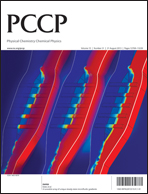Large excited state two photon absorptions in the near infrared region of surprisingly stable radical cations of (ferrocenyl)indenes†
Abstract
Multiphoton absorptions are important non-linear optical processes which allow us to explore excited states with low energy


 Please wait while we load your content...
Please wait while we load your content...